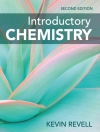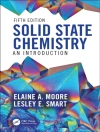Fragment-based drug discovery (FBDD) is a new paradigm in drug
discovery that utilizes very small molecules – fragments of larger
molecules. It is a faster, cheaper, smarter way to do drug
discovery, as shown by the number of pharmaceutical companies that
have embraced this approach and the biotechnology companies who use
fragments as their sole source of drug discovery.
Fragment-Based Drug Discovery: A Practical Approach is a
guide to the techniques and practice of using fragments in drug
screening. The emphasis is on practical guidance, with procedures,
case studies, practical tips, and contributions from industry.
Topics covered include:
* an introduction to fragment based drug discovery, why
using fragments is a more efficient process than predominant
models, and what it means to have a successful FBDD effort.
* setting up an FBDD project
* library building and production
* NMR in fragment screening and follow up
* application of protein-ligand NOE matching to the rapid
evaluation of fragment binding poses
* target immobilized NMR screening: validation and extension to
membrane proteins
* in situ fragment-based medicinal chemistry: screening by
mass spectrometry
* computational approaches to fragment and substructure discovery
and evaluation
* virtual fragment scanning: current trends, applications
and web based tools
* fragment-based lead discovery using covalent capture
methods
* case study from industry: the identification of high affinity
beta-secretase inhibitors using fragment-based lead generation
With contributions from industry experts who have successfully
set up an industrial fragment-based research program,
Fragment-Based Drug Discovery: A Practical Approach offers
essential advice to anyone embarking on drug discovery using
fragments and those looking for a new approach to screening for
drugs.
Tabella dei contenuti
1. Introduction to Fragment based Drug Discovery (Tim Mitchell and
Mike Cherry).
2. Building the Perfect Beast: Designing a Fragment Process to
Fit Your Needs (Edward Zartler and Michael Shapiro).
3. Assembling a Fragment Library (Mark Brewer, Osamu Ichihara,
Christian Kirchhoff, Markus Schade, and Mark Whittaker).
4. The Practical Aspects of Using NMR in Fragment Based
Screening (Johan Schultz).
5. Application of Protein-Ligand NOE Matching to the Rapid
Evaluation of Fragment Binding Poses (William J. Metzler, Brian L.
Claus, Patricia Mc Donnell, Stephen R. Johnson, Valentina Goldfarb,
Malcolm E. Davis, Luciano Mueller, and Keith L. Constantine).
6. Target Immobilized NMR Screening: Validation and Extension to
Membrane Proteins (Virginie Früh, Robert J. Heetebrij and
Gregg Siegal).
7. In situ fragment-based medicinal chemistry: screening by mass
spectrometry (Sally-Ann Poulsen and Gary H. Kruppa).
8. Computational approaches to fragment and substructure
discovery and evaluation (Eelke van der Horst and Adriaan P.
IJzerman).
9. In Silico Design Chapter (Bradley Feuston, M. Katharine
Holloway, Georgia Mc Gaughey and J. Chris Culberson).
10. Fragment-based lead discovery using covalent capture methods
(Stig K. Hansen and Daniel A. Erlanson).
11. Identification of high affinity beta-secretase inhibitors
using fragment-based lead generation.
Jeffrey S. Albert and Philip D. Edwards.
Circa l’autore
Edward R. Zartler, Strategy Consultant, Eli Lilly & Co.; Established the Fragment-based Drug Design paradigm at Eli Lilly.
Michael J. Shapiro, Associate Professor of Pharmacy, University of Maryland School of Pharmaceutical Sciences; Industry experience at Lilley, Novartis and Sandoz.












